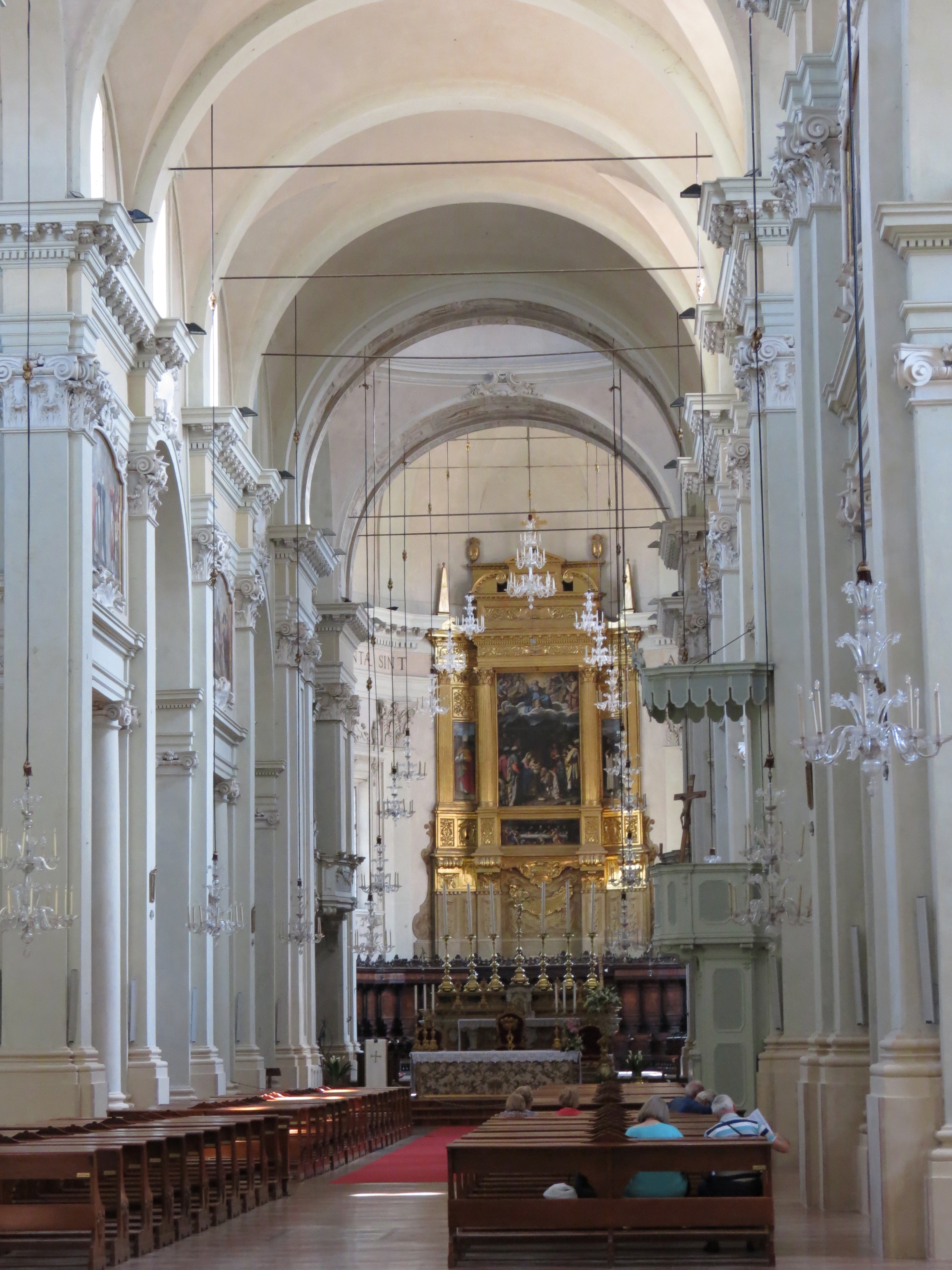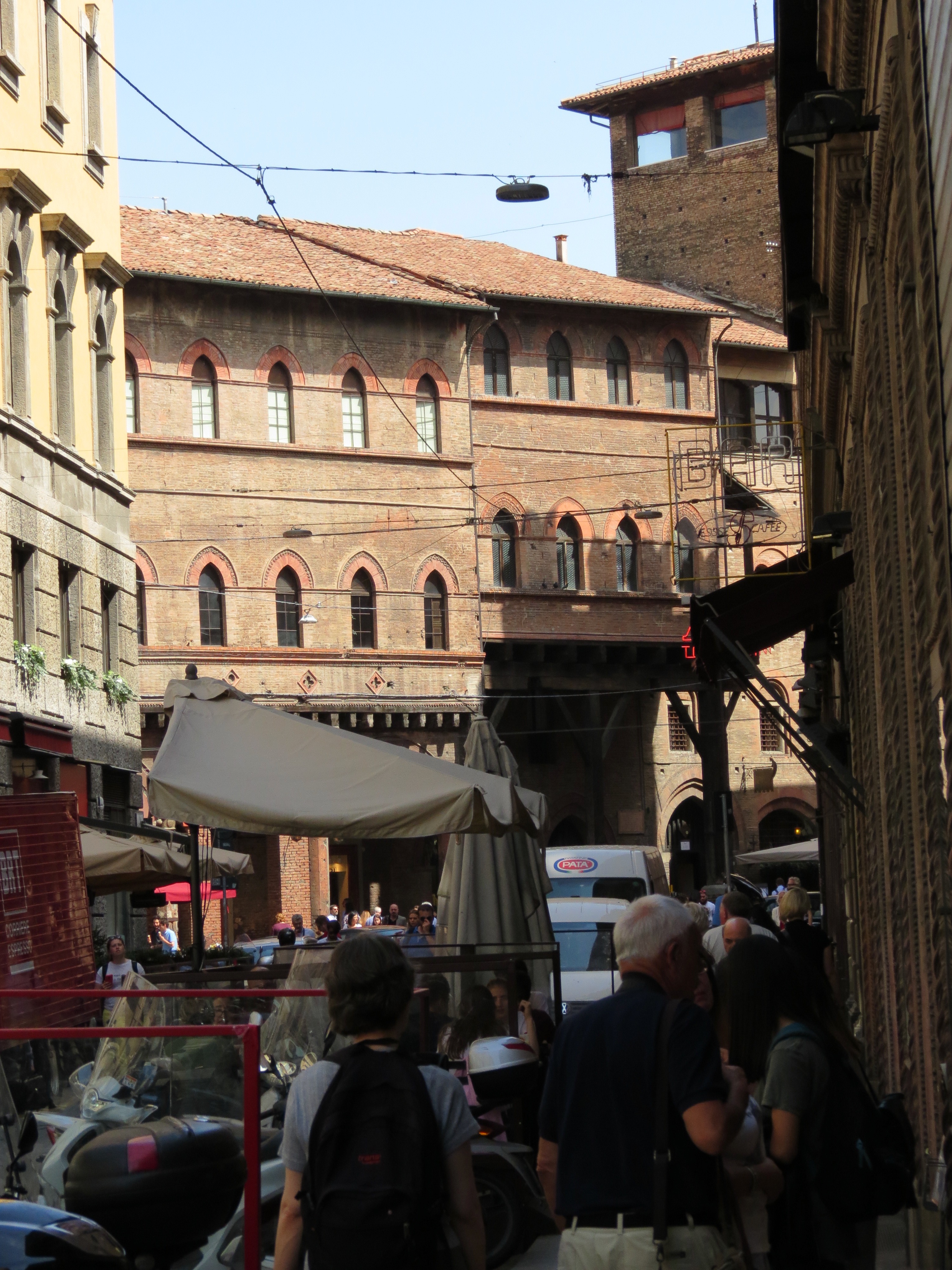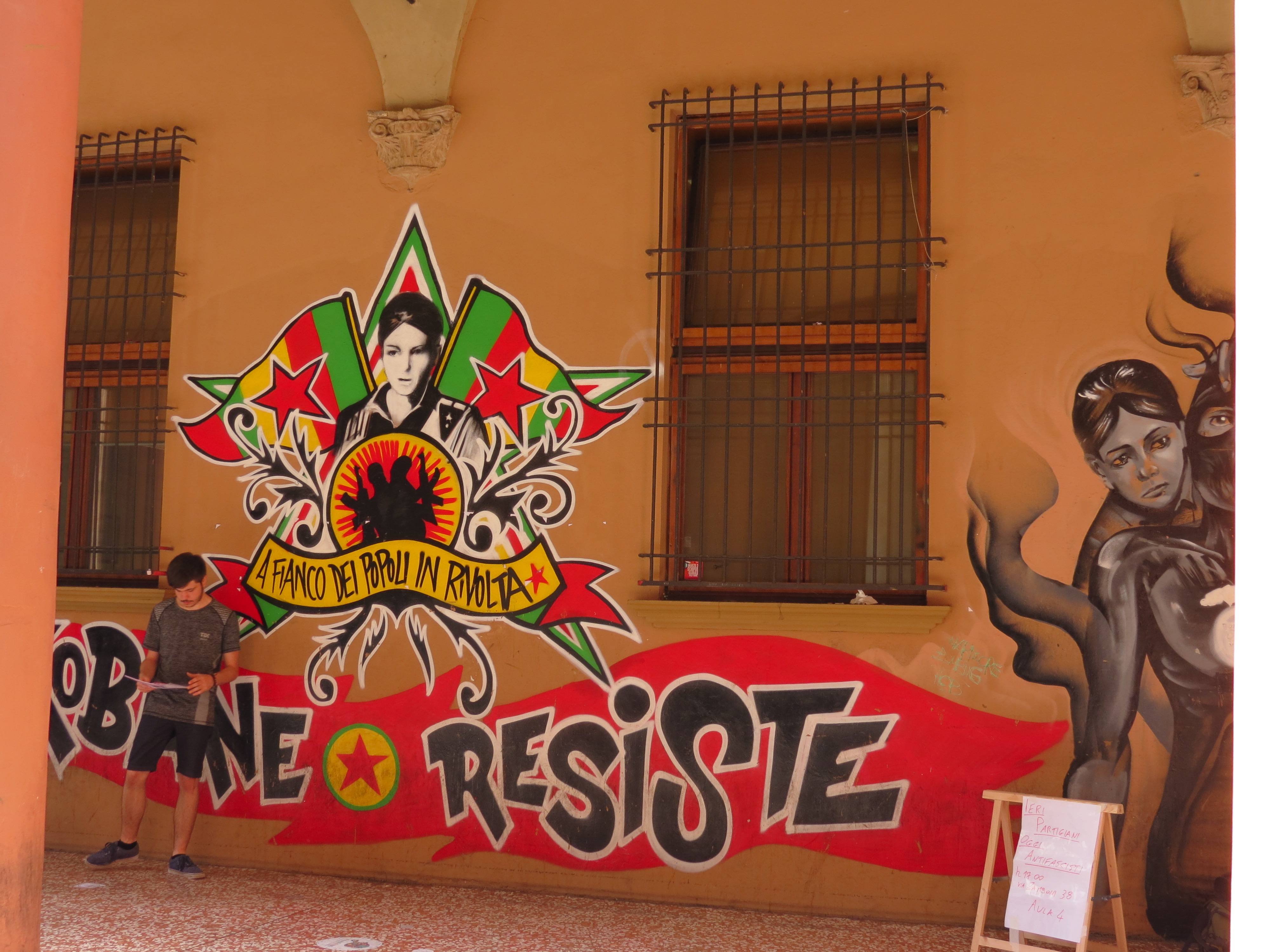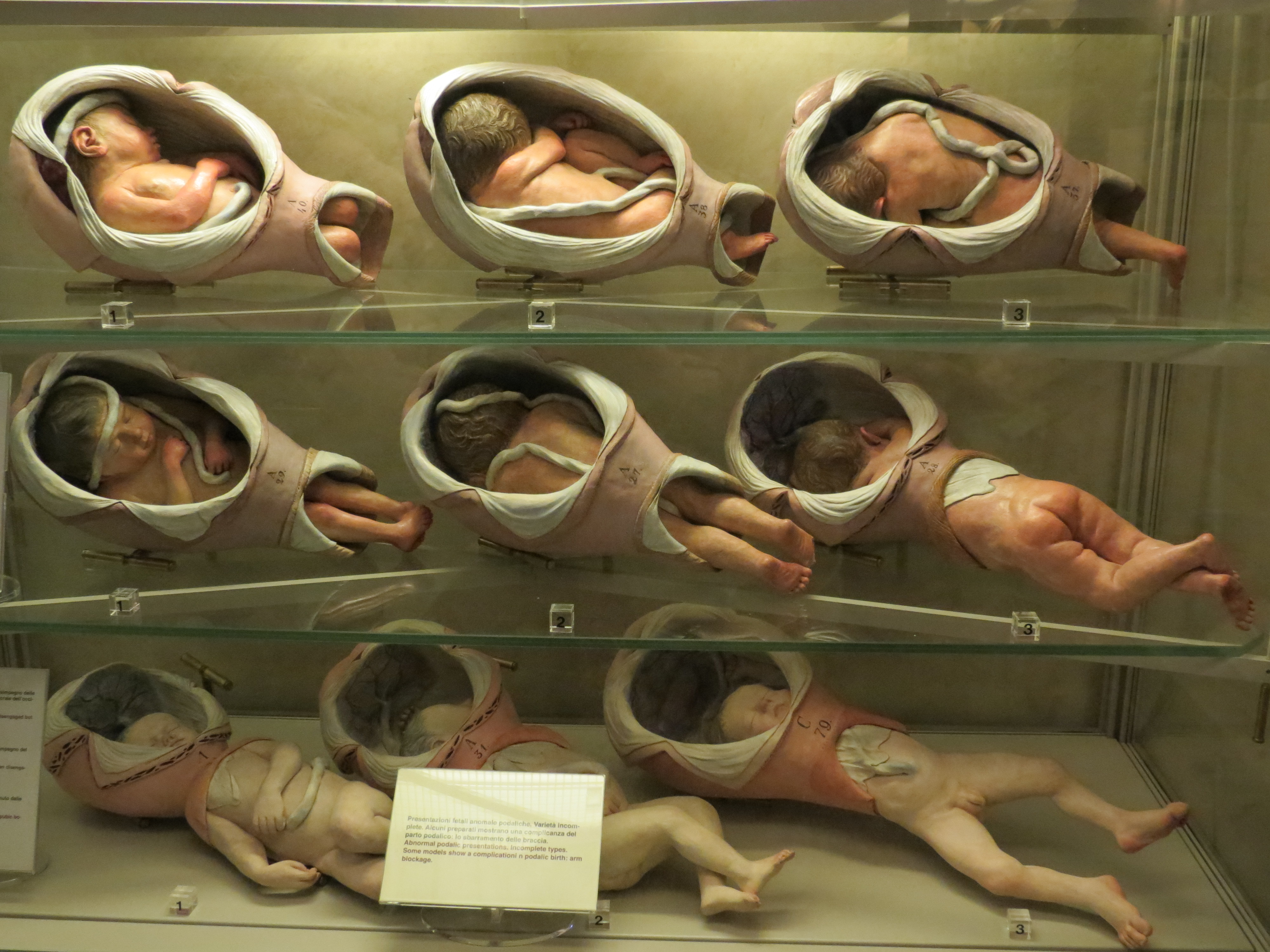
San Domenico
|
–Geoff-Hart.com:–Editing, Writing, and Translation —Home —Services —Books —Articles —Resources —Fiction —Contact me —Français |
You are here: Home (fiction) --> Italy 2018 --> April 24: Parma, Modena, or Ravenna
Vous êtes ici : Accueil (fiction) --> Italy 2018 --> April 24: Parma, Modena, or Ravenna
Previous day: April 23: Bologna
Still staying at Il Cortile del Nespolo.
We got off to a predictably late start today. Slept in until nearly 8 (unheard of at home!), had a lovely chatty breakfast with Barbara (cornetti, which are Italian croissants, stuffed with ham, provolone, and tomato; good strong coffee; granola; a few chocolate biscuits) and decided in the course of conversation that we’d stick around town instead of trying to make it to Modena. Barbara said that apart from the food, there’s not much to see there, and Parma would be much the same, only farther by train. And it’s not like Bologna is lacking for good food.
This kind of revision tends to be typical of our travel planning: we choose a place because it has a few good opportunites for tourism, then change our plan to take advantage of opportunities. It tends to work pretty well.
Instead of hitting the road, we decided to tour Bologna, as there were many areas we hadn’t yet seen and many museums to explore. We started our day with the Church of San Domenico. It’s about what you’d expect as the biggest church in any large Italian city: enormous, soaring roof, full of light and art and sculpture. Standouts of the sculpture include three small pieces by Michelangelo, before he was famous. It’s all visually impressive, and although I get the concept of glorifying God through the creation of beautiful things, I can never quite escape the feeling of how many lives could have been saved if the money had (say) gone to feed the poor or apply religious pressure to convince rulers not to go to war. (Given the number of workers who would typically die during the construction of a cathedral such as this one without supervision by OSHA, it’s somewhat ironic to think of monumental churches being built on blood sacrifices other than the obvious one that’s the reason for their existence.

San Domenico

Michelangelo
From the church we wandered up to the University of Bologna area. We stopped at the Via Cloveture for lunch, as it’s apparently a popular stop for the students. Browsed the many small shops bursting with fresh and tempting foods, and while we thought about how long we could plausibly delay the inevitqble (we weren’t really hungry, but knew that wouldn’t stop us), Shoshanna ordered a glass of pinot blanco wine to sip. Nice and cold and fruity. We went upstairs to find a place to sit and sip, and lo and behold, we found the Rossopomodoro pizza restorant. They specialized in pizza allowed to rise over a long period in wood forms and then cooked in a wood oven (their tag line was “raised for 24 hours and cooked in 90 seconds”). We opted for the version with pork sausage (savory rather than spicy), mildly hot bell peppers, a bit of rapini, tomato sauce, and a ton of good mozzarella, with beer dough for the crust. Very yummy, particularly washed down with a shared pint of Astro Nazurra beer.
The university area overlaps what used to be the Jewish ghetto (an Italian word), but there’s virtually no trace the ghetto ever existed—not so much as a commorative plaque, so far as we could tell, though there were two gravestones rescued and displayed in the medieval museum, which we visited later. Our goal was to get to see the museum of student life at the university, but it was closed for the day. (Which seems odd for a Tuesday. We’ve seen a few signs that tomorrow is the liberation day holiday, so we’ve made a mental note to check on the status of Ravenna museums before we spend nearly 2 hours each way tomorrow on the train just to get there.)

Typical street

Protest art
We did manage to see other parts of the Palazza Poggi university museum. First, as this is perhaps the oldest (medical) school in Europe, they had a fascinating exhibit on obstetrics. It’s not for the weak of heart or stomach, or for anyone contemplating having a baby, as it features dozens of painted ceramic sculptures of all the ways a full-term baby could be badly positioned in the womb. Far too lifelike, but an essential teaching tool for would-be doctors and midwives. One remarkably clever innovation: they had a wooden model of a woman’s pelvis with a glass womb. Dolls in various degrees of distress (e.g., to simulate breach births, umbilical cord around the neck, etc.) would be placed in the womb so that students could practice feeling about the womb blndly to learn what each horrible baby position felt like and what to do about it.

Baby models
One note about museums: Based on the current trip and previous trips, you can expect that backpacks will not be allowed in an indoors Italian museum. Although the museum usually has a columbarium of niches for backpacks or an actual baggage check, we never received a claims ticket. So there’s no guarantee your pack will be there when you’re ready to leave, particularly in the high tourist season, when lots of other people are coming and going. Don’t leave anything valuable in your pack. Or just leave it home.
After the museum, we stopped for a gelato—pistacchio—at a shop inside the university. After mostly eating low-cal frozen yogurt, gelato is amazingly rich and yummy. Of course, the downside is that you need to walk many a mile afterwards to get rid of the extra calories. We were briefly tempted by the Due Torri (two towers), as the taller one lets you climb to the top. But it’s something like 500 steps, and we decided to spare our knees the stress. The smaller tower is closed to tourists, as it has a distinct and visible lean: 3.2 m (about 10 feet).
Our last museum stop of the day was the medieval museum, which has a ton of cool stuff, including both homegrown artifacts and stuff imported from as far away as China and Japan. No standouts, but there’s a good collection of Italian arms and armor from the Renaissance period for sword nuts like me.
We headed home for a pre-dinner nap, then headed out to Biagi, the restaurant our host had recommended. Unfortunately, it was closed, so we foraged along the way back home. Our choice was Il Roscio, which was a vegan-friendly place that featured organic foods from local suppliers—which appealed to our social conscience, plus the menu looked good. We weren’t hugely hungry, so we decided to order two courses and split them. Beer was Senatrice (a tasty saison ale), which is produced by a local organic farm. We had gnochetti (the menu claimed cabbage filling but seemed more like leek) with carrot coulis for our first course, and it was lovely. For our second course, we had roast coniglio (rabbit), which (surprise!) tasted a lot like chicken, though with a richer and more complex flavor. It was nice and tender, with a hint of lemon. We ordered it with a side (contorno) of market veggies: roast broccoli, leeks, and potatoes stained black with black olives. Yum! Good local bread, fresh and chewy, to soak up the gravy and oil/vinegar. Finished off with a vegan tiramisu; though not as good as the non-vegan kind, it was a nice way to end the meal. Plus, of course, a decaff espresso, and since I was trying to be a good tourist, I didn’t order it with milk. (Italians only have milk in their coffee at breakfast.)
Tomorrow’s plan: Off to Ravenna to see why it’s a UNESCO world heritage site.
Next day: April 25: Ravenna
©2004–2025 Geoffrey Hart. All rights reserved.